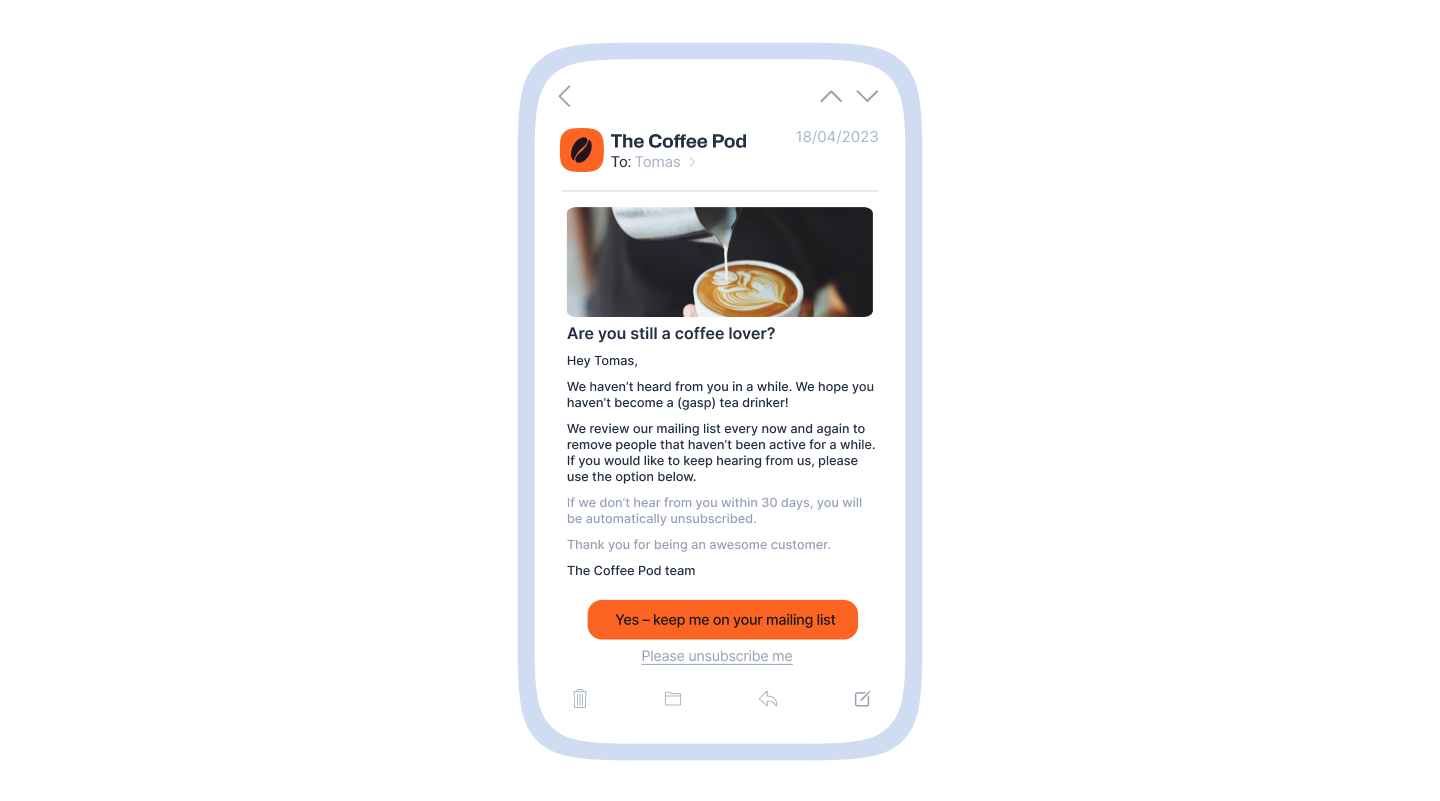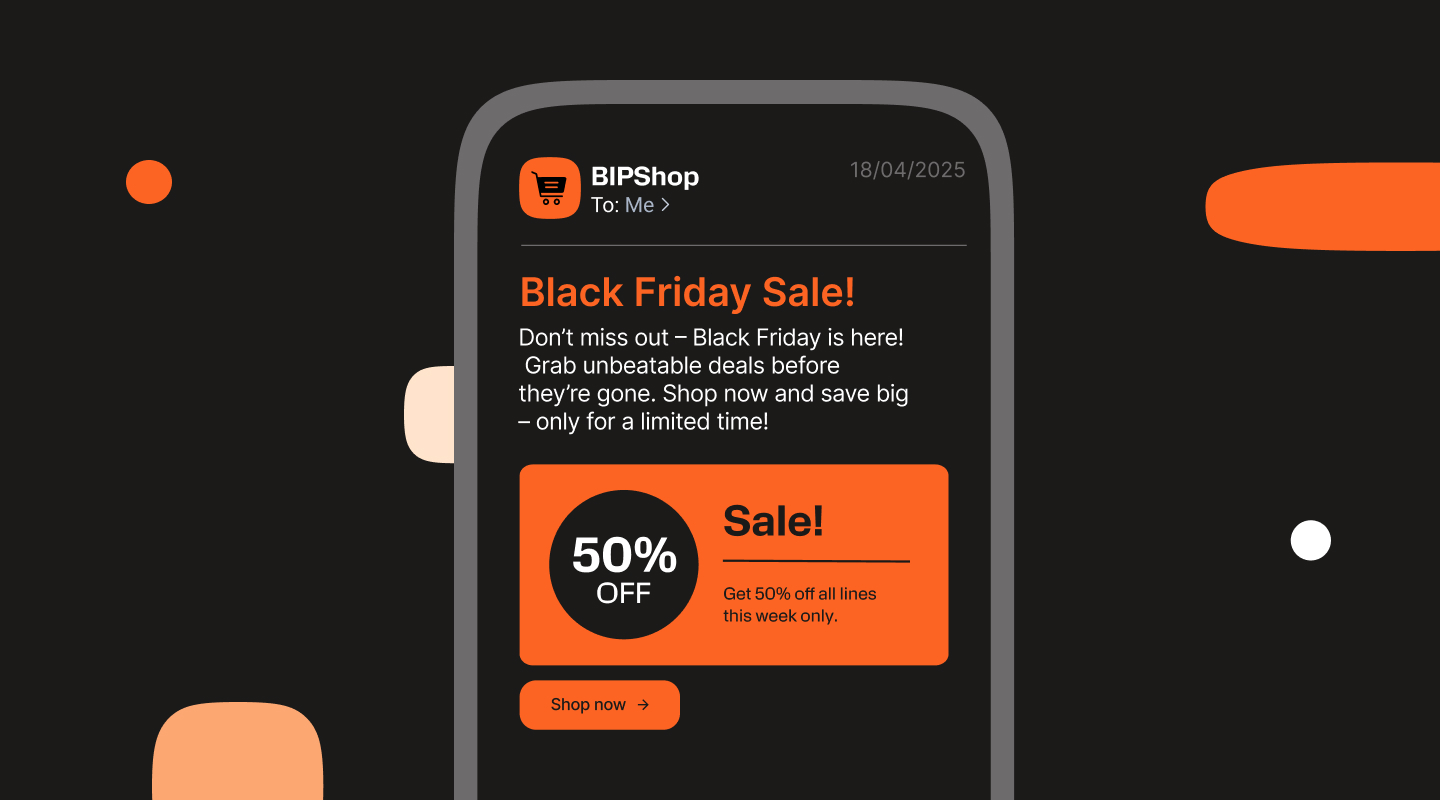Email validation and list hygiene best practices for maximum deliverability
Learn how to maintain your email lists to achieve better campaign results through validation and sunset policy best practices.
A high-quality email list is fundamental for successful email campaigns.
On average, email lists degrade by around 22.5% to 28% annually as people leave companies or change their personal email addresses. This means that approximately 22.5% to 28% of the email addresses on a list become invalid, inactive, or otherwise unusable within a year.
In addition, some subscribers stop engaging with your emails for a variety of valid reasons – which in turn impacts your engagement rates and domain reputation. If emails service providers people see that that recipients are not reading or responding to your messages, they are far more likely to direct them straight to the spam folder.
Email delivery experts strongly recommend that businesses regularly maintain their lists to remove invalid or abandoned accounts and implement a sunset policy to remove or suppress email accounts that no longer engage with messages.
In this blog we will show you how to maintain high quality email lists using a combination of email validation best practices and adopting a strategy for removing addresses that do not respond to re-engagement campaigns.
Why clean email lists are so important
The ultimate aim of good email list hygiene is to ensure that your delivery rates remain high by ensuring that you are sending to real and active inboxes belonging to engaged people (who have obviously opted-in to receive messages from you).
Maintaining your sender reputation
Sender reputation is like a credit score; it signals to email providers the trustworthiness of your outgoing emails. Sending to an email list full of non-existent email addresses or uninterested people will cause excess bounces and spam complaints.
High bounce rates damage your sender score and raise a red flag to Internet Service Providers (ISPs) about your mailing practices.
Improved deliverability
High quality list data will directly improve your delivery rates and the success of your email campaigns as more people will see your offers. Industry leading delivery rates above 95% can only be achieved once invalid addresses have been removed from your list.
Protect against blocklisting
Email Service Providers (ESPs) blocklist senders to protect their users from spam, phishing, and other email threats. Senders that include too many messages to invalid, broken, or misspelled email addresses on that email domain can lead to the ESP adding them to a blocklist. Sending too many messages to people that never engage with you can also send the wrong signal to ESPs.
Reduce the cost of sending emails
Sending emails to invalid or non-existent accounts is money lost as most email service providers charge based on the number of emails on your list. Email list verification helps you get better ROI for your budget.
Increase revenue generating opportunities
A more accurate and verified list helps get your emails to the right audience increasing your chances of converting users into paid customers. With any email campaign, segmenting and sending your content to the right audience ensures your content gets read and converts leading to a higher ROI on your efforts.
Make full use of analytics
A clean list provides meaningful data, helping businesses optimize strategies without wasting resources on uninterested or outdated contacts.
Best practices for better email lists
Maintaining high quality email lists requires a two-pronged approach
- Validate email lists to remove broken, abandoned, or fake addresses
- Remove unengaged recipients by implementing a sunset policy
By doing this and following our deliverability recommendations will ensure you achieve the best possible results for your email campaigns.
The role of email validation
Email validation is a process that verifies the legitimacy and deliverability of email addresses before sending messages to them. It involves checking the format, domain, and mailbox to ensure the address is real and can receive messages.
This could be done manually, but that would be incredibly time consuming as potentially hundreds of thousands of addresses would have to be checked individually. Much better are automated services like ours that can programmatically validate email lists at a rate of up to 3 million an hour.
How email validation works
The validation process includes a number of different elements and steps. With our service these can be performed as part of a broadcast or via the API.
Some of the steps included in a typical process include:
- Syntax check: Ensures the email address is properly formatted (e.g., includes “@” symbol and follows the correct naming conventions).
- Domain verification: Checks if the domain is a real domain and can receive emails.
- Mailbox existence check: Verifies if the specific email address exists and can receive messages.
- Real-time validation: Some services offer real-time validation, where addresses are checked as they are entered into forms or submitted.
The types of invalid email addresses that the validation process can flag include the following:
| Type of email address | Example |
|---|---|
| No-reply email addresses | [email protected] |
| Syntax errors | [email protected] |
| Fake email addresses | [email protected] |
| Role-based email addresses | [email protected] |
| Catch-all email domains | [email protected] |
Implement an effective sunset policy
What is an email sunset policy?
An email sunset policy is a strategy to remove inactive subscribers from your email list over time, based on a period of non-engagement. It’s not just about deleting email addresses, but rather a planned approach to improve list quality, maintain sender reputation, and boost deliverability.
Unlike email validation which aims at finding and removing email addresses that don’t exist or contain mistakes, these emails are valid and are owned by real people. However, for whatever reason they don’t engage with your messages anymore – maybe their circumstances have changed and they no longer require your services, or perhaps they have moved to a different provider.
By removing these emails from your lists, you will be left with more engaged recipients which will benefit your engagement rates and sender reputation.
However, rather than just removing these people who may once have been highly engaged, it is best to try and reboot the relationship to avoid a permanent break up.

Step-by-step guide to implementing a sunset policy
- Identify inactive subscribers: Define the criteria for inactivity (e.g., no opens or clicks within 6 months).
- Segment inactive subscribers: Create a segment of subscribers who meet the inactivity criteria.
- Send re-engagement campaign: Send a targeted re-engagement email to inactive subscribers.
- Monitor engagement: Track opens, clicks, and other engagement metrics for the re-engagement campaign.
- Identify re-engaged subscribers: Segment subscribers who engaged with the re-engagement campaign.
- Move re-engaged subscribers back to active list: Update the status of re-engaged subscribers to active.
- Send final email notifying un-engaged subscribers: Send a final email to those who did not engage with the re-engagement campaign.
- Monitor final engagement: Track engagement metrics for the final warning email.
- Identify non-re-engaged subscribers: Segment subscribers who did not engage with the final email.
- Suppress or remove non-re-engaged subscribers: Move non-re-engaged subscribers to a suppression list or remove them from the mailing list.
More list hygiene best practices
There is more that you can do on top of validating your email addresses and removing unengaged recipients. Here are a few more tactics to consider.
1. Optimize your unsubscribe process
It might seem counterintuitive to put effort into making it easier for people to unsubscribe from your lists – but it is better to have smaller lists of more engaged people.
If people simply don’t want to hear from you then let them unsubscribe with a single click – making them navigate to a separate page and forcing them to answer questions about why they want to disengage is unnecessary (and a bit cringeworthy).
2. Provide more granular subscription preferences
Rather than just offering a binary opt-in or opt-out for your email subscribers you could give them more choice about how often they receive messages and the type of content they receive.
Some people may prefer to receive a monthly summary rather than an email every week. Others may only be interested in certain types of broadcasts – for example information about new product lines or any discounts that you are offering.
3. Use double opt-in effectively
Don’t view double opt-in as an extra hurdle for subscribers to jump. Used properly it can be an extremely effective tool for keeping lists clean by stopping bots, avoiding spam traps, and catching people who hurriedly typed their email address into a form and misspelt ‘gmail’.
It is also a useful tool for staying on the right side of compliance laws like GDPR in Europe.
4. Avoid buying email lists
Buying email list data might seem like a shortcut to rapid growth, but it is never a good idea as people on purchased lists haven’t opted in to hear from you. You will quickly get reported for SPAM tactics, get blocklisted by ESPs, and may even be fined.
In addition to the legal problems, it simply doesn’t work – even if your emails land in genuine inboxes, recipients are unlikely to engage. They don’t know you, didn’t ask to hear from you, and probably won’t trust your message.
Instead, focus on building an organic list through value-driven content, lead magnets, and genuine engagement. It takes more time, but the payoff is a loyal, responsive audience that actually wants to hear from you.
Email Validation in Action
Further reading..

Email reporting masterclass.
The key stats that you should be measuring and how they can be used to improve campaign results and ensure that operational use cases are performing effectively.
- Blog.
- Email.
- Best Practices.

How to nail your email delivery strategy ahead of Black Friday and the shopping season.
With the peak shopping season now extending from October to January, now is the time to ensure that your email strategy and infrastructure is ready to capitalize. Find out how with our detailed guide.
- Blog.
- Marketing.
- Email.
- Best Practices.

Improve email deliverability: Your checklist for best results.
Improving email deliverability and sender reputation just got easy with our step-by-step checklist.
- Blog.
- Customer Service.
- Email.
- Best Practices.

Gamania: Data and AI transform gamer to game-changer.
Explore Gamania's journey from game developer to pan-entertainment leader and how their partnership with Infobip fuels customer-centric growth through AI and data-driven solutions.
- Blog.
- Spotlight.
- Email.
- Moments – Customer Engagement.
- People CDP – customer data.
- SMS.
- Awareness.

Are Google and Yahoo killing cold emails?.
Google and Yahoo have new rules for bulk email senders to improve the quality of emails, reduce spam, and improve user experience. Here’s everything you need to know.
- Blog.
- Email.
- Trends and Insights.







